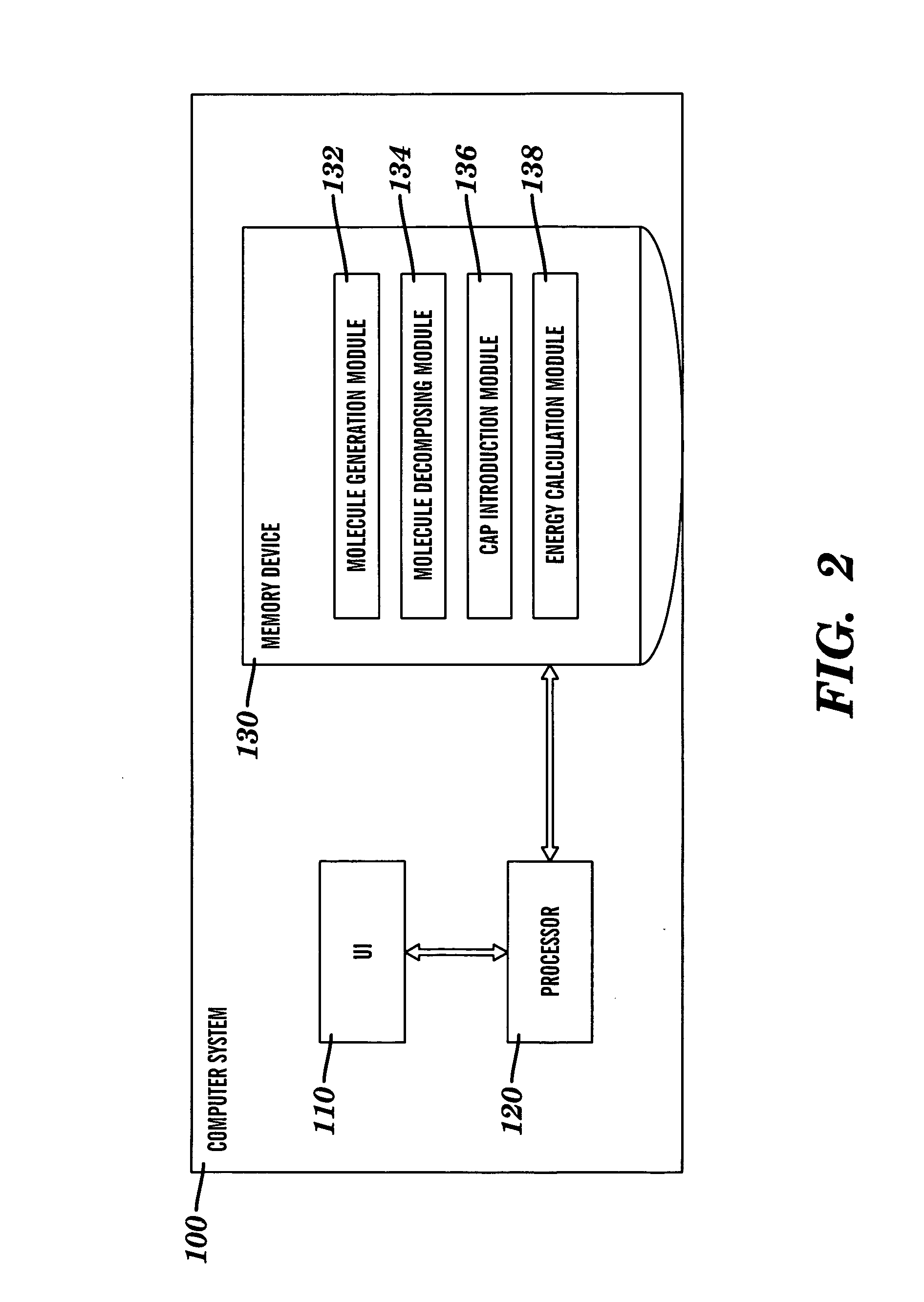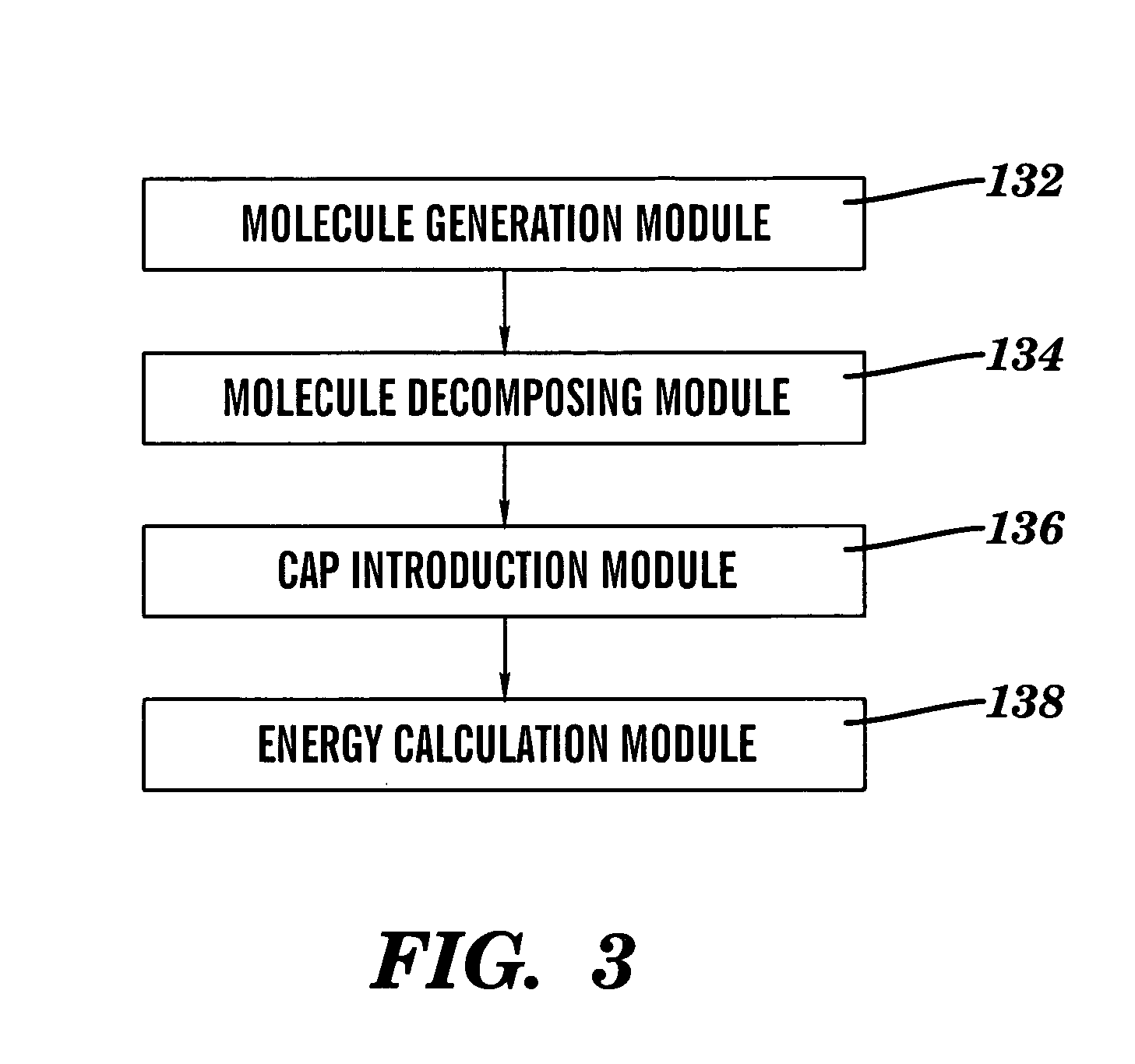Method for introducing conjugated caps into molecule fragments and systems and methods for using the same to determine inter-molecular interaction energies
a technology of conjugated caps and molecule fragments, applied in the field of conjugated caps introducing into molecule fragments, can solve the problems of high computational cost, inability to fully quantum mechanical or ab initio calculate the energy of intermolecular interaction, and inability to meet the requirements of quantum mechanical calculations
- Summary
- Abstract
- Description
- Claims
- Application Information
AI Technical Summary
Benefits of technology
Problems solved by technology
Method used
Image
Examples
first embodiment
this invention relates to a method of introducing conjugated caps onto molecular fragments. A first molecule is provided, and then decomposed into two or more molecular fragments. Pairs of conjugated caps, containing a first cap member and second cap member, are introduced onto the molecular fragments at each decomposition point in the molecule. The pairs of caps are introduced in a manner that, after introduction, each molecular portion contains a molecule fragment and at least one cap member. FIG. 3 is a flowchart depicting the method steps of the preferred embodiment.
When the molecule has been decomposed or cut, the individual pieces of the molecule are referred to as molecular fragments, whereas, after the molecular fragments have been capped, they are referred to as molecular portions.
In the first step, a first molecule is provided. Preferably, the molecule is provided electronically, such as on a computer or other system that has the capability of executing modeling softwar...
third embodiment
this invention relates to a system for calculating intermolecular interaction energy. The system contains (a) a molecular representation module that provides a first molecule; (b) a molecular decomposing module that decomposes the molecule into two or more molecular fragments; and (c) a molecular processing module that introduces one or more pairs of conjugated caps having a first member and a second cap member at one or more locations in the molecule to create a plurality of molecular portions. Each molecular portion in the molecular representation contains a fragment of the first molecule and at least one of the first and second cap members of the conjugated caps.
The system for calculating intermolecular interaction energy may be a computer system. However, other systems that would perform similar functions are envisioned. A first molecule may be provided in the form a molecular, graphical, or mathematical representation. An example of a mathematical representation is a molecule ...
fourth embodiment
this invention relates to a composition. The composition contains a molecule having a plurality of units, and a plurality of pairs of conjugated caps having a first cap member and a second cap member, wherein each of the plurality of pairs of conjugated caps has been inserted between two of the units under conditions effective to substantially preserve the properties of a chemical bond being cut to insert the pair of conjugated caps. The first cap member substantially mimics the electronic effect of the units of the molecule on a first side of the pair of conjugated caps and the second cap member substantially mimics the electronic effect of the units of the molecule on a second side of the pair of conjugated caps. The function of the cap members is discussed above in the disclosure relating to the selection of the cap members.
The composition may be formed by the methods described above, i.e., the molecule may be provided, decomposed, and have conjugated caps introduced onto the mo...
PUM
| Property | Measurement | Unit |
|---|---|---|
| intermolecular interaction energy | aaaaa | aaaaa |
| interaction energy | aaaaa | aaaaa |
| total interaction energy | aaaaa | aaaaa |
Abstract
Description
Claims
Application Information
 Login to View More
Login to View More - R&D
- Intellectual Property
- Life Sciences
- Materials
- Tech Scout
- Unparalleled Data Quality
- Higher Quality Content
- 60% Fewer Hallucinations
Browse by: Latest US Patents, China's latest patents, Technical Efficacy Thesaurus, Application Domain, Technology Topic, Popular Technical Reports.
© 2025 PatSnap. All rights reserved.Legal|Privacy policy|Modern Slavery Act Transparency Statement|Sitemap|About US| Contact US: help@patsnap.com



